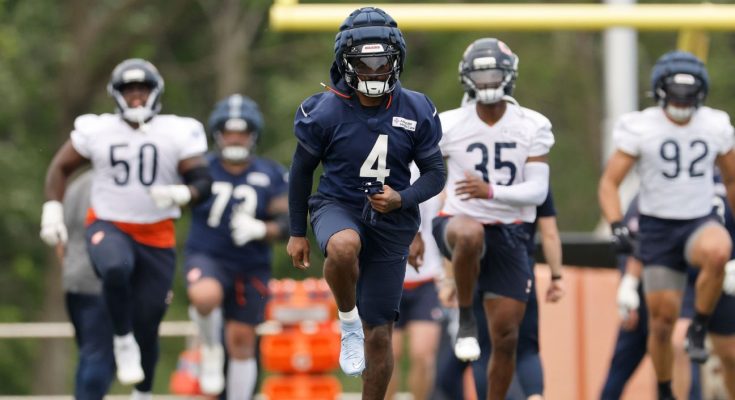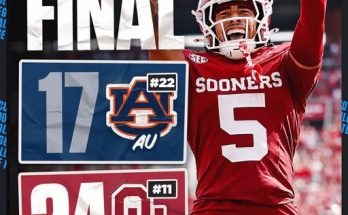D’Andre Swift enters the 2025 NFL season with something to prove, and he’s not alone. The Chicago Bears running back room, once touted as one of the more promising backfields in the NFC, finds itself at a critical juncture. Injuries, inconsistency, and a lack of offensive rhythm plagued the Bears’ rushing attack in 2024. As the new season approaches, the spotlight intensifies on Swift and his fellow backs to restore their reputation, rediscover their form, and ultimately redefine the identity of the Chicago offense.
Swift’s arrival in Chicago was met with optimism. After flashing talent in Detroit and producing a 1,000-yard season with the Philadelphia Eagles, Swift was seen as a back on the cusp of stardom—shifty, explosive, and capable of contributing in the passing game. But his first season in Chicago fell short of expectations. Swift finished 2024 with 683 rushing yards and just 3 touchdowns, averaging under 4 yards per carry. More troubling, though, was the way he faded into the background during crucial stretches of games. Whether it was a lack of confidence from the coaching staff or simply poor execution up front, Swift rarely had the opportunity to take over games the way he once did. Now, in 2025, the Bears need him to be more than just a complementary piece—they need him to be the engine.
Chicago’s struggles in the run game weren’t just about Swift. The entire backfield, from Khalil Herbert to Roschon Johnson, lacked punch. Herbert, previously a steady and efficient runner, seemed out of sync in Luke Getsy’s offense. Roschon Johnson showed occasional flashes, particularly in pass protection and short-yardage situations, but didn’t carve out a consistent role. The offensive line was frequently shuffled due to injuries and inconsistency, making it nearly impossible for any back to find a rhythm. While blame can be spread across multiple parties, the result was the same—the Bears finished near the bottom of the league in rushing efficiency and struggled to control tempo in games.
New head coach Shane Waldron, who arrives from Seattle with a reputation for creative run schemes and play-action mastery, has made it clear that reestablishing the run is a top priority. Waldron’s offenses in Seattle thrived when the ground game was effective, and he’s looking to replicate that blueprint in Chicago. For Swift, that means a fresh opportunity to become a featured back again. Waldron’s zone-based scheme fits Swift’s strengths. When healthy, Swift has elite vision and the kind of burst that can punish defenses that over-pursue. The new staff is expected to put more emphasis on getting Swift into space, using misdirection, motion, and pre-snap movement to confuse defenses and create lanes.
The Bears’ decision not to invest heavily in a new running back this offseason speaks volumes. It’s a vote of confidence in the current group but also a warning. The coaching staff believes that Swift, Herbert, and Johnson have the talent to succeed—but if they falter again, changes will come swiftly. Swift, now 26, is at a point in his career where potential must translate into production. He’s no longer the promising young back with time to grow. He’s in his prime, and the Bears are banking on him to act like it.
Reports from training camp have been encouraging. Swift has looked explosive, particularly in outside zone concepts where he can plant his foot and get upfield. He’s reportedly taken on more of a leadership role in the locker room as well, helping to mentor younger backs and taking ownership of his role in the offense. Coaches have praised his approach and maturity, noting that he’s stayed healthy and dialed in. It’s early, and camp optimism doesn’t always carry over to Sundays, but the vibes around Swift are undeniably better than they were a year ago.
The offensive line, a critical piece of the puzzle, is also trending in the right direction. Rookie left tackle Jonah Moncrief has turned heads early, while veterans like Teven Jenkins and Nate Davis are finally healthy and showing cohesion in practice. With a more stable and athletic line, the Bears believe they can execute Waldron’s outside zone concepts more effectively than last year’s more power-based scheme. A healthy line also gives Swift the ability to read blocks and make second-level defenders miss—an area where he excels when given the chance.
Of course, a running back is only as good as the game flow allows him to be. That’s why the development of quarterback Caleb Williams will be pivotal for Swift and the entire rushing attack. Williams, the No. 1 overall pick in the 2024 draft, showed flashes of brilliance during his rookie year but also dealt with growing pains. With another offseason of development and a revamped offensive system, expectations are high that Williams will make a significant leap. If he can threaten defenses vertically and keep them honest with his arm and legs, running lanes will inevitably open for Swift and company.
The dynamic between Swift and Williams could be particularly fruitful. Swift is one of the better receiving backs in the NFL when utilized properly, and Waldron’s offense tends to emphasize backs in the passing game. In Seattle, Waldron often used play-action rollouts and quick dump-offs to backs as extensions of the run game. Swift’s natural hands and route running give Williams a security blanket and a mismatch opportunity against linebackers. If Swift can rack up 50+ receptions in addition to carrying the load on the ground, he could quietly have one of the more productive all-around seasons of any back in the NFC.
There’s also a sense of urgency in the locker room. The Bears’ defense, once the identity of the franchise, is undergoing a youth movement and may not be elite enough to carry the team through low-scoring affairs. That means the offense needs to do more, and that starts with establishing balance. Swift, more than anyone else in the backfield, has the ability to control games if he finds a rhythm. His ability to wear down defenses with quick cuts and deceptive acceleration could be the difference in close fourth quarters.
Swift isn’t the only one motivated by a need to bounce back. Khalil Herbert is entering a contract year and knows that this might be his last shot to earn a second deal in Chicago. Roschon Johnson is still trying to prove he’s more than just a short-yardage back. Even Travis Homer, primarily a special teams contributor, is battling for reps and trying to make a name for himself in Waldron’s new-look offense. The internal competition has pushed each player to be sharper, more physical, and more engaged in camp practices. Position coach Omar Young has emphasized fundamentals, ball security, and vision—three areas where the Bears collectively struggled last year.
It’s rare for a team to see so many backs underachieve in one season and yet return the entire group, but that’s exactly what Chicago has done. The gamble is that better coaching, a healthier line, and a maturing quarterback will elevate everyone’s play. It’s a calculated risk, but one that could pay off handsomely if Swift recaptures the form that made him a breakout star in Philadelphia. The upside is certainly there. When Swift is locked in and featured properly, he’s capable of posting 1,200 yards from scrimmage and breaking games open. The question is whether the Bears can put him in position to succeed and whether he can seize the opportunity.
The Bears’ front office and fans alike are hoping that the 2025 campaign marks a turning point. With a promising young quarterback, a fresh coaching staff, and a renewed commitment to the run, Chicago is trying to turn the page on a forgettable 2024 season. Swift and his fellow backs are central to that effort. If they stumble again, the Bears could find themselves shopping for new answers in 2026. But if they hit their stride, the Bears’ offense could transform into a more balanced, explosive, and efficient unit than fans have seen in years. For Swift, it’s not just about redemption—it’s about proving he still belongs in the conversation of top-tier NFL running backs. For the Bears, it’s about finding their offensive identity and giving a talented young roster the stability it needs to compete. And for fans, it’s about believing that this time, the pieces are finally in place to make a real run.



